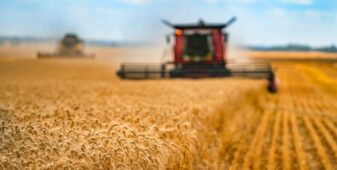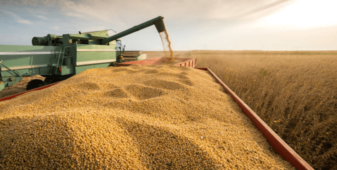Explainer Focus
- Understanding the basics of wheat.
- What different types are grown around the world?
- Who are the major producers and users?
Introduction
Wheat is classified as a grain, with origins dating back some 10,000 years or more.
A resilient crop it can be grown in many regions of the World thriving in a wider variety of climatic conditions and altitude than other grains.
As a result, wheat is grown over the largest area of land of all grains, approximately 550 million acres. With 1 acre being about the size of a football pitch, that’s a huge area on a global scale.
It has been a staple of diets for humans and livestock over many centuries.
Latest figures from the US Department of Agriculture estimates World production in 2022 at 781 million metric tonnes second only to Corn with an estimated 1,155mmt.
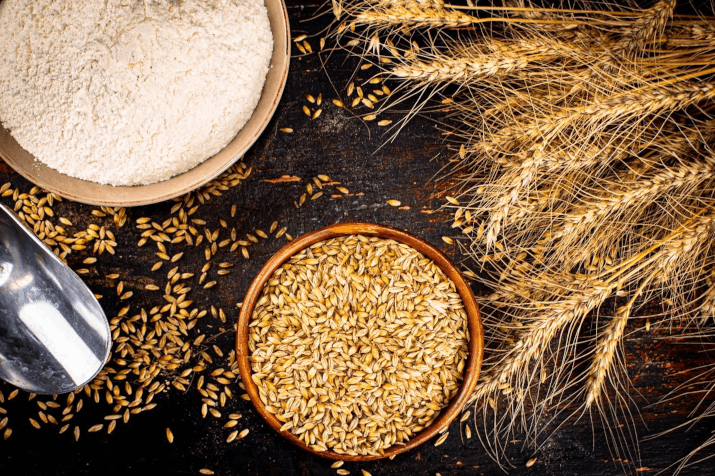
Types of wheat
Many people think wheat is all the same.
In reality it is a lot more complicated than just wheat is wheat. Every use has particular needs.
Weather plays a critical part in the types of wheat grown in each area of the world.
Winter or Spring
Winter wheat
- Winter wheat is the endurance athlete of wheats.
- Planted/sown, in the autumn/winter, and hence referred to as winter.
- Plants germinate and establish themselves to then lie dormant though the cold and harsh conditions of winter, happily surviving under a layer of snow when needed.
- Growth continues once temperatures warm in spring to reach maturity for the summer harvest.
Spring wheat
- Spring wheat is the sprinter athlete of the wheat world
- Produced where adequate growth cannot easily be established prior to early, long and harsh winters.
- Once the harshness of winter has passed, when soil temperatures warm, the crop is sown.
- It races out of the blocks for a rapid growth to maturity and harvest in the latter stages of the summer months.
Feed wheats, for animal consumption, together with the lower grade milling wheats for human consumption will generally be winter sown crops.
Spring varieties, of higher quality, will be used in the best of bread flours.
The higher quality spring wheat will generally have lower yields than winter wheats. However, the higher quality grades unsurprisingly attract better prices on the World market.
Hard or Soft Wheat
The main differences
The fundamental difference is, as the names suggest, the hardness or ‘resistance to the physical forces of compression’.
Hard wheat is generally higher in protein and gluten content than soft wheat. Whereas soft wheat has greater levels of starch.
When milled into flour for human consumption hard wheat flour is coarser while soft wheat flour is finer. This means that soft wheat does not sieve as easily, due to agglomeration.
Uses
Wheat is used to feed people, livestock and a small number of industrial uses.
Many processes for human consumption need individual wheat types of hard or soft with distinct quality specifications.
The higher protein and gluten levels found in good quality hard wheats suit their uses in bread flour. We also see hard wheats used in the production of tortillas, noodles and such like.
Soft wheat varieties are more suited to producing flour for cookies, cakes, doughnuts, pastries, flat breads and crackers.
Livestock are less fussy than us humans, thus any hard or soft wheat can usually be used.
Basic Quality
Wheat quality requirements are numerous and dependent upon the individual end market.
The most important of these qualities are:
A. Moisture, usually around 15% for any wheat.
B. Protein will see the best hard milling wheats up to levels of 15-16%, while soft and lower grade hard wheats down to 10% or lower for feed wheat.
C. Specific weight relates to the size of the wheat grain, measured in kilograms per hectolitre (kg/hl). A larger grain size gives better extraction rates for milling processes and thus offers better value per bushel/tonne. Contracts are generally 72-76kg/hl.
D. General condition is a prerequisite for even basic feed wheats. Any moulds, toxins, bug infestations, ergot, odours, sprouting and generally poor appearance may render the wheat unsuitable for the purpose for which it is intended.
Value, which is worth more?
- Higher protein, specialist hard milling wheats will attract the highest prices.
- Lower grade hard wheats and milling grade soft wheats will attract lower prices but are likely to be higher yielding and easier and less costly to grow.
- Feed wheats are the highest yielding varieties at the low end of prices.
Who grows what and when?
The table below shows planting and harvest periods around the World.
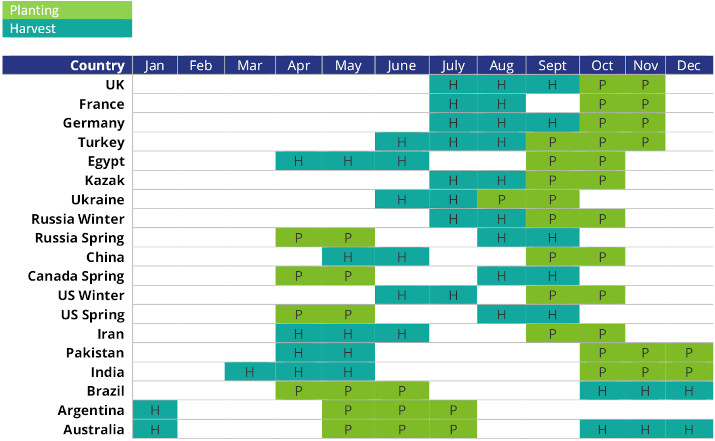
The Biggest Wheat Influencers
The tables below detail the major producers, exporters, importers and ending stock holders.
The 2 largest producing countries are also the 2 most populous countries in the World, China and India.
Their combined production at 240mmt of the World’s 781mmt total is 30%; while their combined ending stocks, at 156mmt is a staggering 58% of the 268mmt global total.
Neither country figures in the export table as both maintain large reserves of wheat to ensure food security for their huge populations.
Excluding China and India, we see that the largest producers are unsurprisingly also the largest exporters.
The large importing nations of North Africa, although wheat producers, are unable to grow enough to be self-sufficient in wheat.
South east Asia and the Middle East, as other large importing regions, are unable to cultivate the wheat needed, thus are destined to be big buyers year on year.


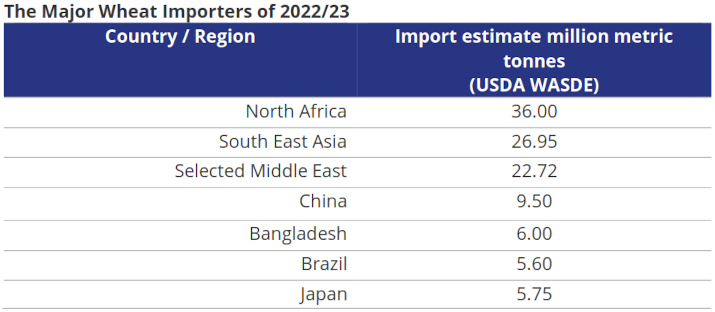

Concluding Thoughts
- Wheat has been a staple of our diets and the livestock that feed us for many centuries.
- A resilient crop with numerous types grown in different parts of the World.
- End products need varying types and specifications to suit their individual requirements.
- China has the largest reserves while Russia is the single biggest exporter.
- North African nations are the most significant importers.
- A hugely important grain, not as simple as often perceived.
- In Part 2 we will examine how the global markets allow the world of wheat to function.



